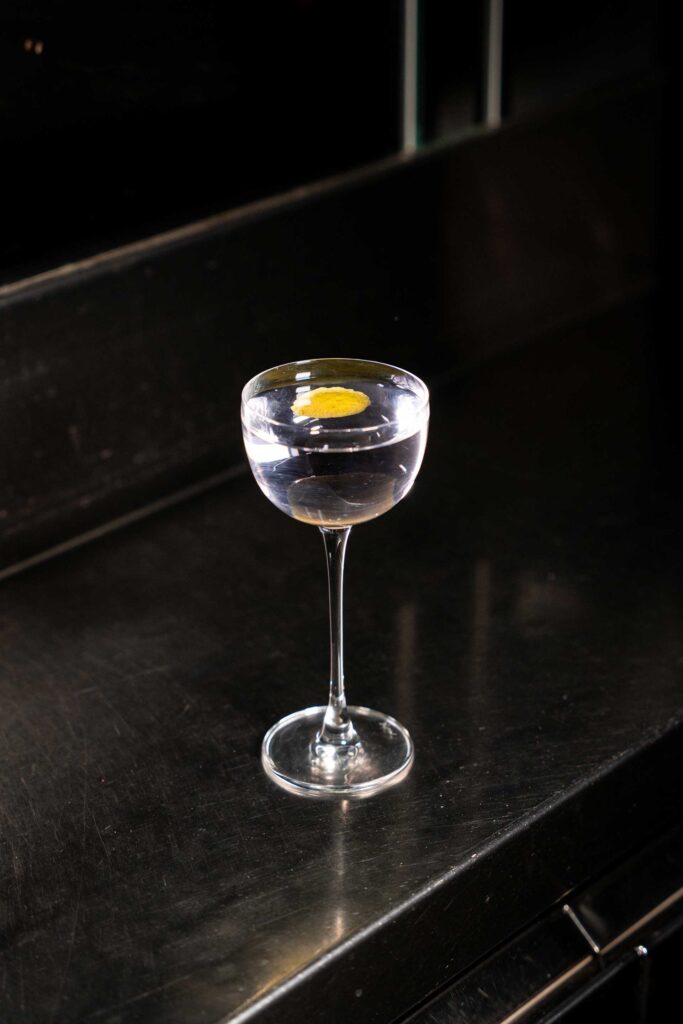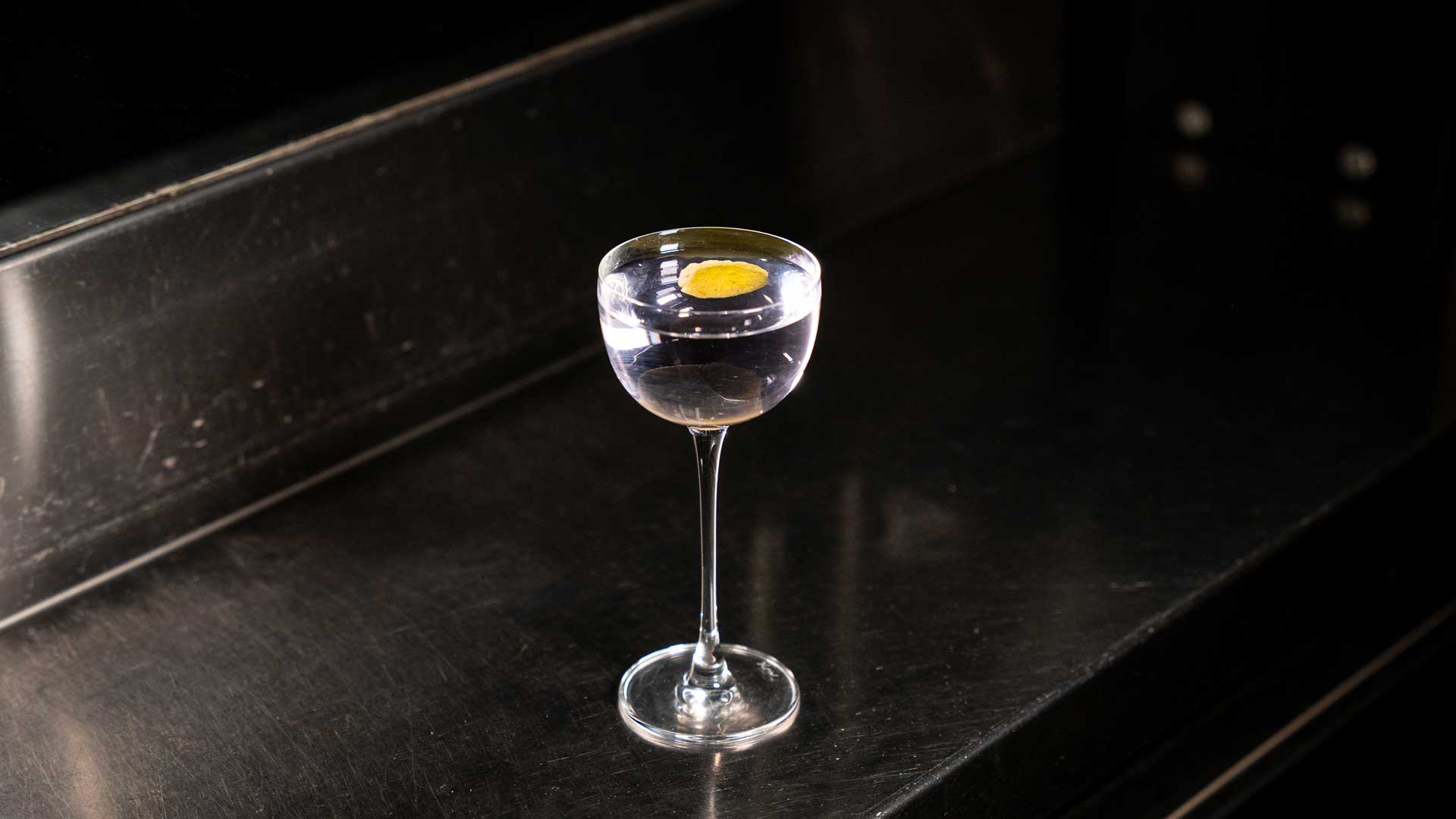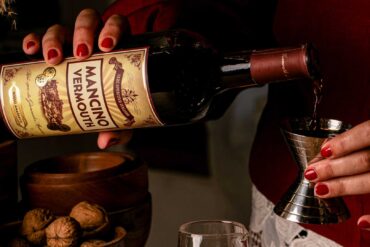No one knows exactly why the Arsenic and Old Lace cocktail shares its name with Joseph Kesselring’s dark comedy play. The drink existed long before the play’s Broadway debut, but under a different name and with different proportions. Then came a new chapter—a rechristening—and the cocktail became forever linked to a mild-mannered journalist who discovers he’s the only sane person in a family of lunatics and serial killers.
Arsenic and Old Lace: the Origins of the Cocktail
The origins of Arsenic and Old Lace date back to the 1910s, though back then it was known as the Attention Cocktail, or simply Atty. Its creator and place of origin remain lost to history.
What is known for sure is that its first appearance in print dates back to 1917, in Recipes for Mixed Drinks by Hugo Ensslin. Back then, it answered to a different name—the Attention Cocktail—and was a precise balance of gin, vermouth, absinthe, and crème de violette, shaken over ice.
The same ingredients appear again in 1930, when Harry Craddock includes the drink in his Savoy Cocktail Book. This time the name changes to Atty, and the recipe shifts: gin takes center stage (three parts), followed by vermouth (one part), with absinthe and crème de violette reduced to just three dashes each.
Then came 1941. In Crosby Gaige’s Cocktail Guide and Ladies’ Companion, the drink appears under a new name: Arsenic and Old Lace. The ingredients and proportions mirror Craddock’s version, but the name has changed. Coincidentally—or perhaps not—the same year marks the Broadway debut of Kesselring’s play.
From True Crime to Theatre: The Story Behind the Name
Let’s rewind to 1917, when newspapers in Connecticut became obsessed with a chilling crime story. At the center of the case was Amy Archer-Gilligan, a woman who ran a retirement home and was accused of poisoning her elderly residents with arsenic and strychnine to steal their savings. On June 18th of that year, she was found guilty and sentenced to death—later commuted to life imprisonment.
Many believe Joseph Kesselring drew inspiration from Archer-Gilligan when writing Arsenic and Old Lace, his pitch-black comedy about love, murder, and family secrets. The plot centers on a kind-hearted man preparing to marry the woman he loves, but first he must come to terms with his criminal relatives.
Two charming aunts quietly dispatch lonely old men by poisoning them, a fugitive brother is on the run from the police, and another brother believes he’s Theodore Roosevelt, busy digging the Panama Canal in the basement—where the bodies end up buried.
The play premiered on Broadway on January 10th, 1941, and just a few years later, in 1944, Frank Capra adapted it for the silver screen. The film arrived in Italy under the same name: Arsenico e vecchi merletti.
Why Did the Cocktail Change Its Name?
The timing is telling. In 1941, Arsenic and Old Lace debuted on Broadway, and that same year Crosby Gaige’s Cocktail Guide and Ladies’ Companion hit the shelves. Gaige—a theatrical impresario known for his many hats—seems a likely candidate to have renamed the cocktail in homage to the play.
The clues are there: the year matches, Gaige had close ties to the theater world, and the shift from Attention or Atty to Arsenic and Old Lace happened right in his book. Yet no definitive proof exists. While the connection is compelling, it remains impossible to say with certainty that Gaige is solely responsible for the name we use today.
The Recipe of the Arsenic and Old Lace

Below is the recipe as it appears in the Cocktail Guide and Ladies’ Companion (1941). Many bartenders today prefer to stir rather than shake this drink, and some opt to rinse the glass with absinthe instead of mixing it directly into the cocktail.
Ingredients
- 90 ml dry gin
- 30 ml absinthe
- 3 dashes dry vermouth
- 3 dashes crème de violette
Method
Fill a shaker with ice and add all the ingredients. Shake while imagining elderly gentlemen being discreetly buried in the cellar. Strain into a chilled coupe.
Garnish
Gaige’s recipe suggests no garnish, but a lemon twist works beautifully if desired.
Photo by Julie Couder per Coqtail – location Dry Milano. All rights reserved







